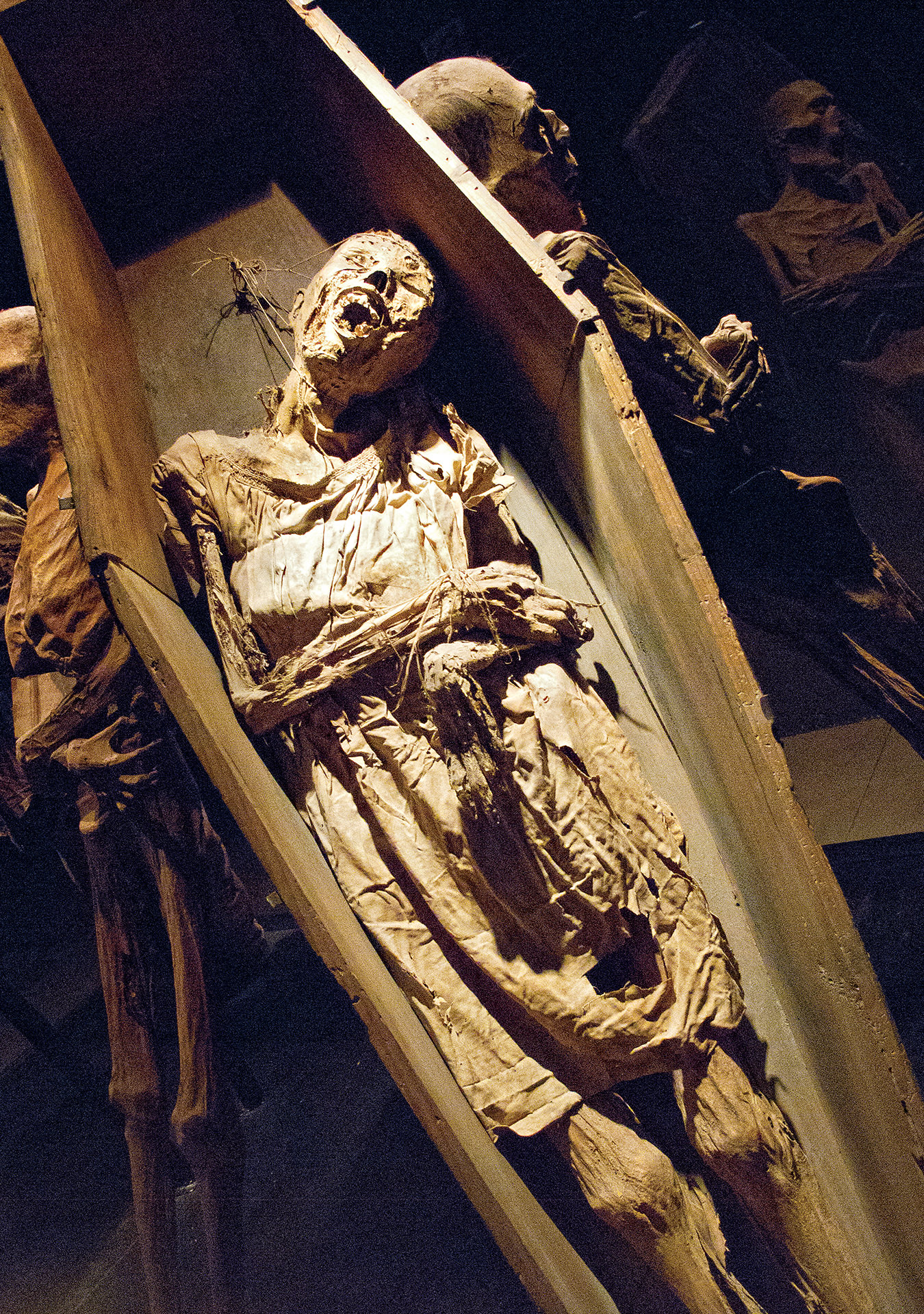The smallest mummy in the world is an almost perfectly preserved, six-month-old fetus. It’s on display at the Museo de las Momias de Guanajuato, a UNESCO-listed Mexican colonial town. Built next to a cemetery, the famous and macabre Mummy Museum has more than 100 mummies—the largest collection in the western hemisphere.
Unlike the Egyptian mummies at the British Museum, though, these mummies are not thousands of years old. Gravediggers exhumed the first mummified body from the area in 1865, and more bodies were soon disinterred. At the time, a new law required families to pay a tax to keep their loved ones buried forever; if they couldn’t pay, authorities dug up the corpses, which had been naturally mummified by the soil’s minerals. By the late 1880s, the curious started coming to see the mummies, sometimes even breaking off pieces as souvenirs.
Today the mummies, their skin looking like parchment paper, are displayed behind glass cases. Particularly striking is the mummy of a woman who experts say was buried alive after being wrongly pronounced dead from cholera. One arm covers her face, her open mouth drawn back in what looks like a horrified scream.
More grisly is the museum’s “chamber of death.” An open coffin contains a mummy with spikes piercing right through the body and skull—this was the unfortunate man’s punishment for offending the Catholic church.
This extraordinary museum gives pause for some sombre reflections. Who were these people? What were their stories? There are few answers. Unlike their aristocratic Egyptian counterparts, they were ordinary local people, now immortalized.







